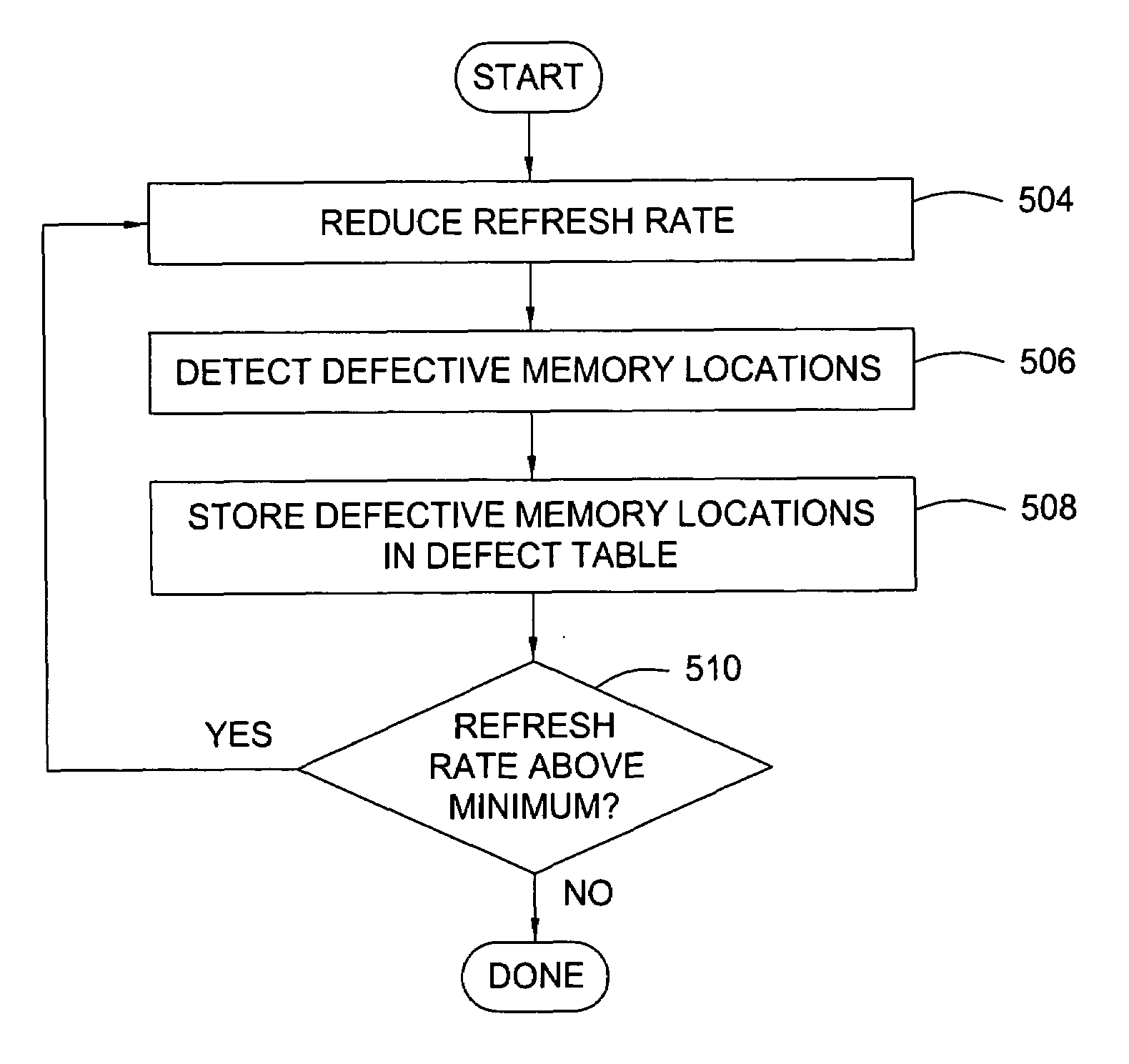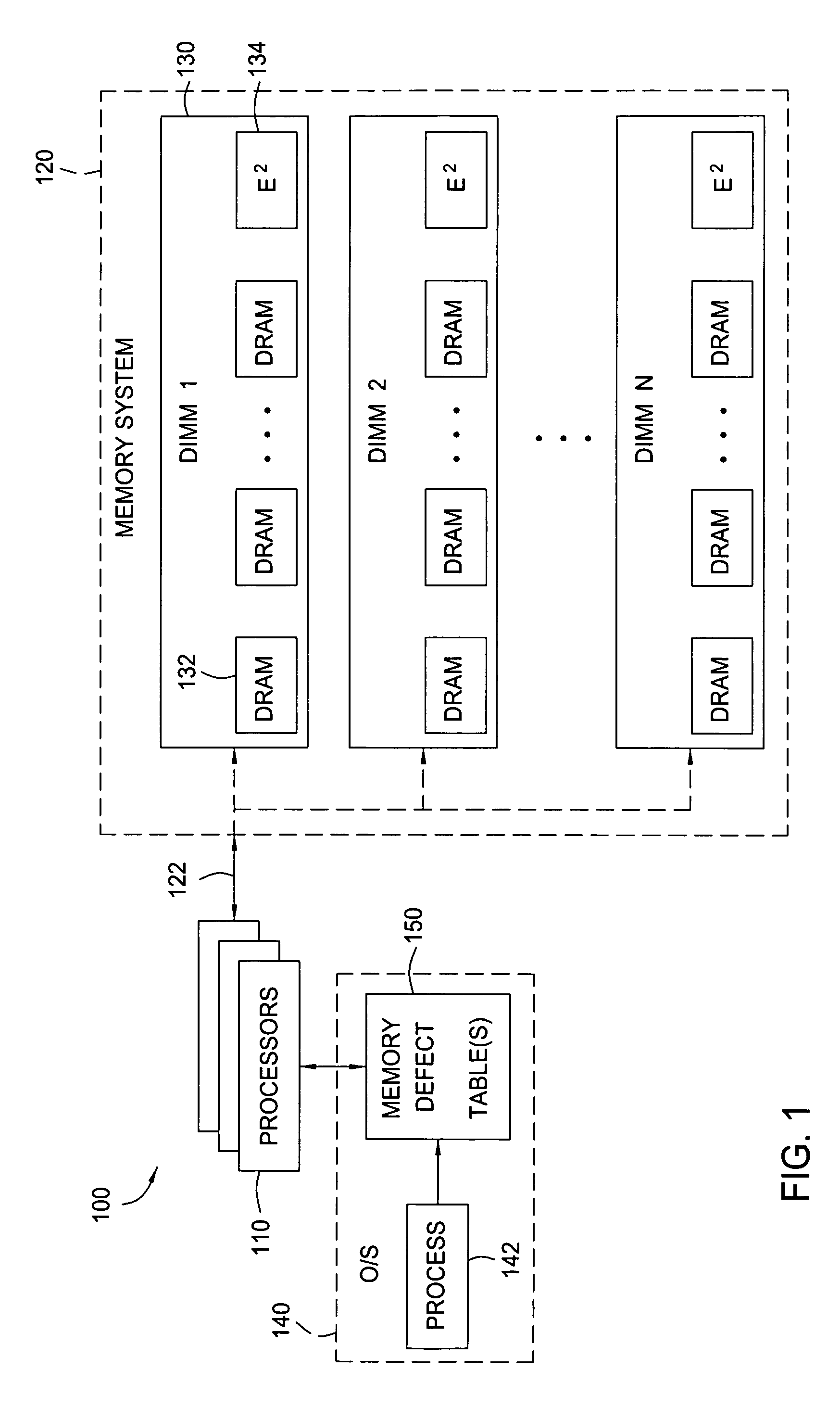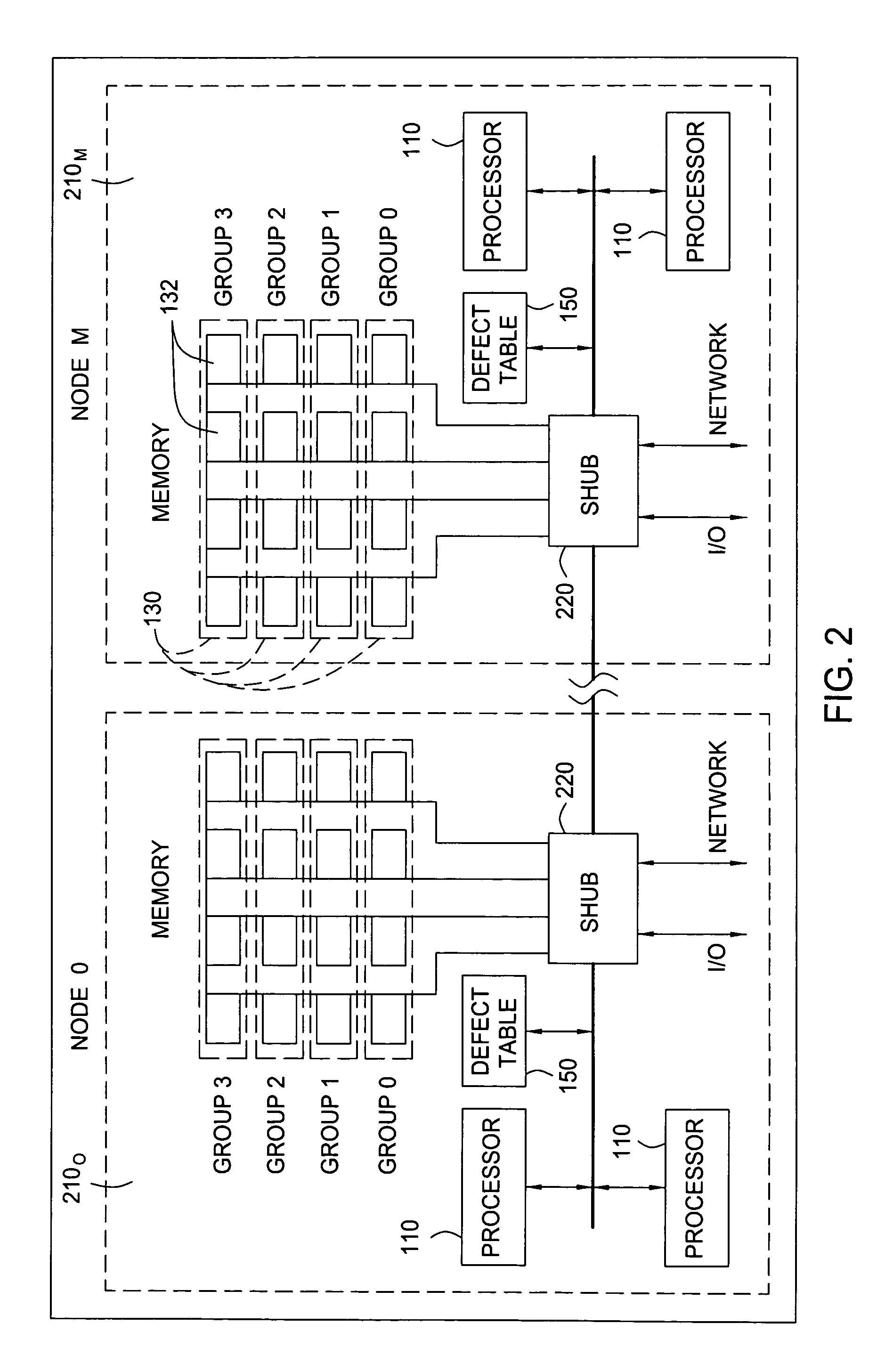Generation and use of system level defect tables for main memory
a technology of main memory and defect tables, applied in the direction of digital storage, dc motor speed/torque control, instruments, etc., can solve the problems of inefficient replacement of modules in this manner, defects that may develop over time, and the least amount of memory failures can be expected, so as to increase the overall reliability of memory systems
- Summary
- Abstract
- Description
- Claims
- Application Information
AI Technical Summary
Benefits of technology
Problems solved by technology
Method used
Image
Examples
Embodiment Construction
[0020]Embodiments of the present invention generally provide methods and apparatus for maintaining and utilizing system memory defect tables that store information identifying defective memory locations in memory modules. For some embodiments, the defect tables may be utilized to identify and re-map defective memory locations to non-defective replacement (spare) memory locations as an alternative to replacing an entire memory module. For some embodiments, some portion of the overall capacity of the memory module may be allocated for such replacement. As a result, memory modules may be made more fault-tolerant and systems more reliable. Further, this increased fault-tolerance may significantly reduce service requirements (e.g., repair / replacement) and overall operating cost to the owner and / or vendor.
[0021]Embodiments of the present invention will be described below with reference to defect table to identify defective memory locations in dual inline memory modules (DIMMs). However, t...
PUM
 Login to View More
Login to View More Abstract
Description
Claims
Application Information
 Login to View More
Login to View More - R&D
- Intellectual Property
- Life Sciences
- Materials
- Tech Scout
- Unparalleled Data Quality
- Higher Quality Content
- 60% Fewer Hallucinations
Browse by: Latest US Patents, China's latest patents, Technical Efficacy Thesaurus, Application Domain, Technology Topic, Popular Technical Reports.
© 2025 PatSnap. All rights reserved.Legal|Privacy policy|Modern Slavery Act Transparency Statement|Sitemap|About US| Contact US: help@patsnap.com



